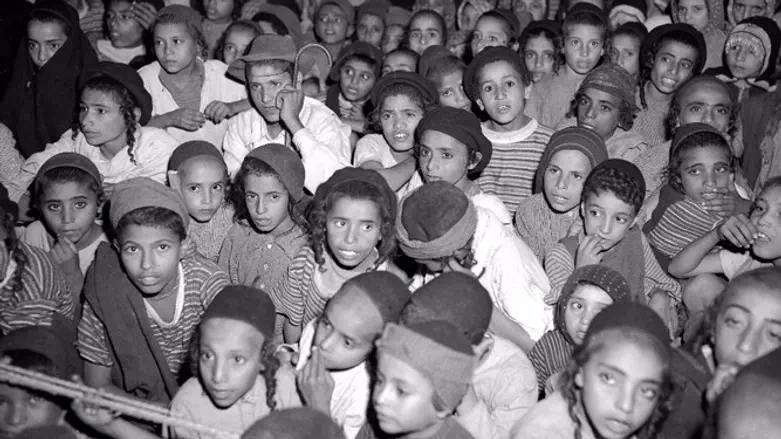
The protocols of the investigative committees established to determine the fate of young Yemenite children who disappeared in the 1950s were revealed Wednesday to the public. 3,500 files were released which include 210,000 documents relating to the disappearance of Yemenite infants.
Prime Minister Netanyahu spoke at a special ceremony in honor of the protocol's being opened to the public, stating that "we are correcting a historic injustice today, an intentional oversight, a mystery or a case of discrimination- we don't know. For 60 years people did not know about the fate of their children. It is almost incomprehensible and we are not willing to let this continue so we therefore established a principle of transparency and justice."
Tzahi Hanegbi (Likud), the minister appointed by the prime minister to investigate the protocols and himself of Yemenite origin, added that "in the first decade of the state, nearly a million immigrants arrived in Israel and changed the face of the state, but in those same years a heartrending trauma affected many of the immigrant families. For nearly 70 years this issue had refused to disappear from the public agenda since the hearts of those families refused to be cut off from their loved ones. We feel a moral obligation to reveal the truth and help families try and verify what happened to their children. I think that this step will help remove the skepticism and mistrust of the families."
Justice Minister Ayelet Shaked(Jewish Home) said that "I believe that the State of Israel does not have the privilege to hide the committees' conclusions on this issue. This does not mean that by revealing the materials all the answers to the nagging questions will be clarified, but it is clear that without revealing these materials it is impossible to deal with the matter adequately."
The Yemenite infant disappearance investigation is based on the fact that many Yemenite mothers were told that their newborn infants or young children who were hospitalized for an illness had died. They were never shown the bodies or given the location of the burial place of their children. It was alleged, after an inordinate number of "deaths" aroused the parents' suspicions that the children were alive and that the staff of the hospitals gave the children to Ashkenazi families for adoption, thinking that the new immigrants would either not care as they had large families, that the children would be better off - or discovering a lucrative way to earn extra money.
Among the testimonies which appear in the archives, the protocols discuss a girl who was adopted by holocaust survivors after it was claimed that her mother had left the country and her father was unknown.
Among those who testified before the first committee, the Kedmi committee, was Shmuel Avidor Hacohen , a rabbi and journalist. Avidor reported how in 1963 he visited New York and met a couple there - an Israeli mother, American father and a child who did not look like its parents. When I asked them quietly who the child was, they said it was a Yemenite child whom they had adopted in Israel.
"I got into conversation with them. I didn't think there was something serious here. They told me that they had adopted her and that there were many more families here that had adopted Yemenite children."
"Somebody mentioned that if you wanted to take a Yemenite child it would cost $5000 (equivalent to $50,000 in present-day values, ed.)," continued Avidor. "The matter was publicized but did not make waves and I did not pursue it further. It became clear to me that not just Yemenite children were involved, there were also North African children who were adopted."
Avidor claimed that an American rabbi, Bernard Bergman, was involved in taking the children and transferring them for adoption.